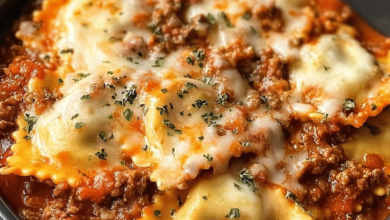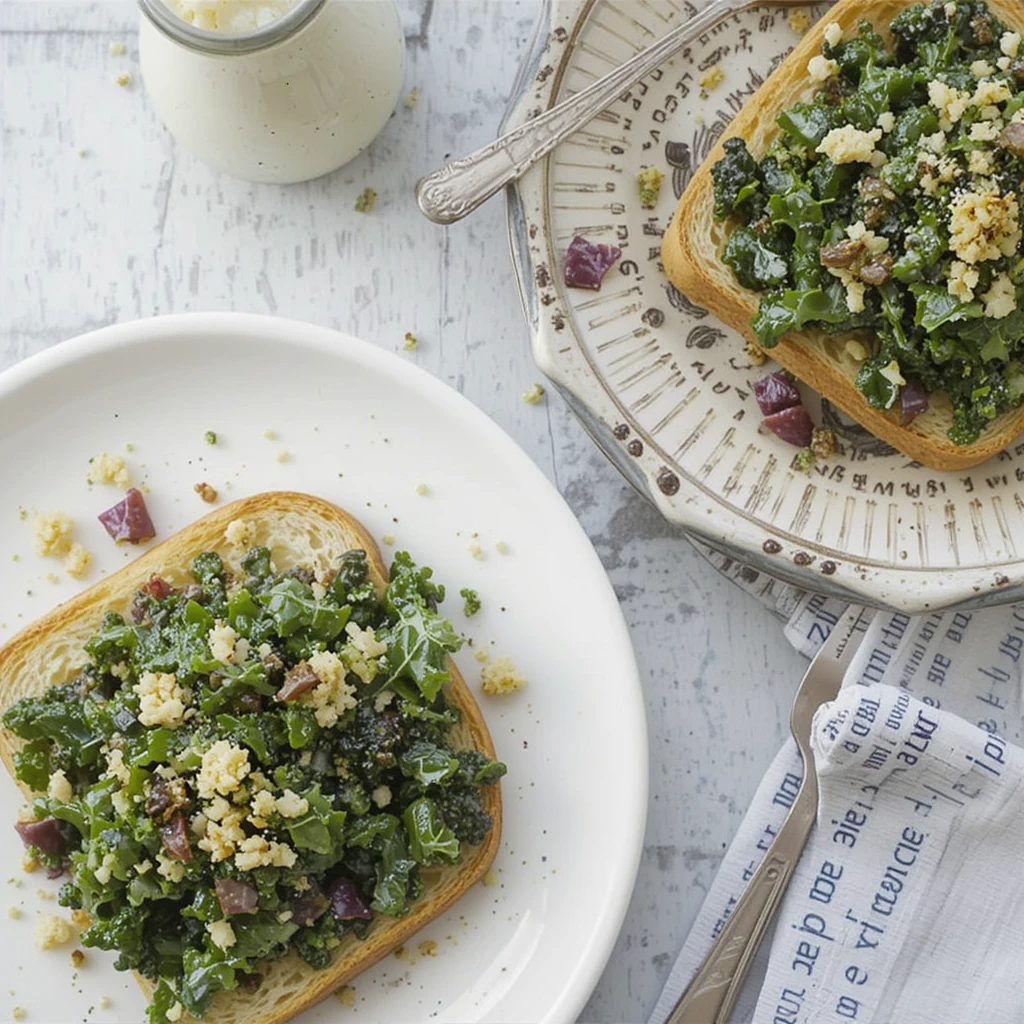Delicious Vegan Jerky Recipe: Easy Seitan Jerky for Meatless Snacking
Delicious Vegan Jerky Recipe: How to Make Flavorful, Homemade Vegan Jerky with Seitan, Tofu, and Soy Curls
If you’re looking for a satisfying, chewy, and flavourful snack, then vegan jerky is your new best friend. This blog post dives deep into the world of plant-based jerky, covering everything from classic seitan jerky to soy curl and tofu variations. Whether you’re a long-time vegan or simply curious about meat alternatives, this guide will teach you how to make vegan jerky at home with simple ingredients and step-by-step instructions. Let’s get started on crafting a delicious vegan snack that’s high in protein and rich in savoury taste.

What is Vegan Jerky and Why Should You Try It?
Vegan jerky is a plant-based snack that mimics the chewy texture and savoury taste of traditional beef jerky. Made with ingredients like seitan, soy curls, or tofu, vegan jerky offers a great protein-packed alternative for those following a vegan diet or looking to reduce their meat consumption. It’s not only easy to make at home but also super versatile—think teriyaki seitan jerky, spicy soy curl jerky, or smoky tofu jerky.
Whether you need a quick snack, a hiking companion, or a satisfying bite in between meals, vegan jerky is a fantastic option. Plus, it’s far more sustainable and cruelty-free compared to animal-based jerky.
Key Ingredients to make this recipe
Creating vegan jerky at home requires a few essential ingredients that contribute to both the texture and flavour:
- Soy Curls: Soy curls, made from whole soybeans, have a texture that can be rehydrated to mimic the chewiness of meat.
- Seitan: Seitan, or wheat gluten, has a firm, chewy consistency and is high in protein, making it ideal for jerky.
- Tofu: Tofu can be pressed and sliced thin to create a unique, slightly softer jerky texture.
- Marinade: A well-crafted marinade, often including soy sauce, liquid smoke, maple syrup, and smoked paprika, brings out that rich, savoury flavour.
- Seasonings: Black pepper, vegan Worcestershire sauce, and a pinch of smoked paprika add depth to the jerky’s taste.
By mixing and matching these ingredients, you can create a variety of flavours and textures to satisfy your cravings.
Ingredients with Quantities

To create delicious, homemade vegan jerky, here’s what you’ll need for each ingredient option:
- For Seitan Jerky:
- 1 cup seitan, thinly sliced (about 1/8-inch thick)
- 1/4 cup soy sauce
- 1 tablespoon maple syrup
- 1 teaspoon liquid smoke
- 1 teaspoon smoked paprika
- 1/2 teaspoon garlic powder
- 1/4 teaspoon black pepper
- For Tofu Jerky:
- 1 block (14 oz) firm tofu, pressed and sliced into 1/4-inch pieces
- 1/4 cup soy sauce
- 1 tablespoon maple syrup
- 1 teaspoon liquid smoke
- 1/2 teaspoon garlic powder
- 1/4 teaspoon black pepper
- For Soy Curl Jerky:
- 2 cups dried soy curls
- 1/4 cup soy sauce
- 1 tablespoon maple syrup
- 1 teaspoon liquid smoke
- 1 teaspoon smoked paprika
- 1/2 teaspoon garlic powder
- 1/4 teaspoon black pepper
- Hot water for rehydrating soy curls
These ingredients provide the basic flavor profile for a classic vegan jerky, but feel free to add more spices or sauces (like vegan Worcestershire or sriracha) to suit your taste preferences.
Step-by-Step Preparation Method

For Seitan Jerky:
- Prepare the Marinade: In a large bowl, mix together the soy sauce, maple syrup, liquid smoke, smoked paprika, garlic powder, and black pepper. Stir until fully combined.
- Slice the Seitan: Thinly slice the seitan to about 1/8-inch thickness. This ensures the jerky becomes chewy and evenly dried.
- Marinate: Place the seitan slices into the bowl with the marinade, making sure each piece is well-coated. Let it marinate for at least 1 hour, or up to overnight for a deeper flavor.
- Dehydrate or Bake: Preheat the dehydrator to 150°F or the oven to its lowest temperature (around 175°F). Arrange the seitan slices in a single layer on the dehydrator tray or baking sheet lined with parchment paper.
- Cook: If using a dehydrator, dehydrate for about 3 hours, checking halfway through. In the oven, bake for 2-3 hours, flipping once, until the jerky is dry but still bendable.
- Cool and Store: Remove from the heat source, let the jerky cool to room temperature, and store in an airtight container for up to a week.
For Tofu Jerky:
- Prepare and Press the Tofu: Drain and press the tofu to remove excess moisture. Slice the tofu into 1/4-inch thick pieces.
- Prepare the Marinade: In a large bowl, combine soy sauce, maple syrup, liquid smoke, garlic powder, and black pepper, stirring well.
- Marinate the Tofu: Add tofu slices to the marinade, coating each slice. Let it marinate for 1-2 hours in the fridge.
- Cook the Tofu: Place the tofu slices in a single layer on a dehydrator tray or a baking sheet lined with parchment paper. Dehydrate for 3-4 hours at 150°F, or bake in the oven at 175°F for 2-3 hours, flipping halfway through.
- Cool and Store: Let tofu jerky cool to room temperature before storing in an airtight container.
For Soy Curl Jerky:
- Rehydrate the Soy Curls: Place the dried soy curls in a large bowl and cover with hot water. Let them soak for 10-15 minutes, then drain and press out excess water.
- Marinate the Soy Curls: In a large bowl, mix together the soy sauce, maple syrup, liquid smoke, smoked paprika, garlic powder, and black pepper. Add the rehydrated soy curls, ensuring they’re evenly coated. Marinate for at least 1 hour.
- Cook the Soy Curls: Place the soy curls in a single layer on a dehydrator tray or a parchment-lined baking sheet. Dehydrate at 150°F for about 2-3 hours, or bake at 175°F for 1.5-2 hours, until the soy curls are chewy and dry.
- Cool and Store: Let soy curl jerky cool completely, then store in an airtight container.
Nutritional Information (per 100g Serving)
| Nutrient | Amount per 100g |
|---|---|
| Calories | 210 kcal |
| Protein | 20 g |
| Carbohydrates | 15 g |
| Dietary Fiber | 6 g |
| Total Fat | 8 g |
| Saturated Fat | 1 g |
| Sodium | 750 mg |
| Iron | 4 mg |
| Calcium | 120 mg |
Each ingredient—whether seitan, tofu, or soy curls—offers a balanced mix of plant-based protein, fiber, and essential nutrients, making this homemade vegan jerky both nutritious and satisfying. Adjust portions and flavors to make your own perfect batch of vegan jerky!
What Are Soy Curls?
Soy curls are made from whole, non-GMO soybeans and have a unique texture perfect for jerky. Rehydrating them in water brings them to life, and they readily absorb marinades, making them a fantastic base for vegan jerky. Soy curl recipes are popular because they’re easy to make and incredibly versatile.
In this vegan jerky recipe, soy curls serve as an excellent substitute for meat, especially when paired with a rich marinade. You can find soy curls in bulk at health food stores or online.
How to Make Vegan Jerky with Seitan
Seitan, also known as wheat gluten, is a high-protein ingredient that’s well-loved in vegan cooking for its meaty texture. Here’s how to make vegan seitan jerky:
- Slice the Seitan Thinly: To get the best texture, slice the seitan as thinly as possible. This helps it absorb the marinade and dry out evenly.
- Marinate Well: Seitan absorbs flavours beautifully, so let it sit in the marinade for at least an hour.
- Bake or Dehydrate: Bake the seitan at a low oven temperature or use a dehydrator. The result will be a chewy, flavourful vegan jerky that’s hard to resist.

Tofu Jerky: A Tasty, Protein-Packed Option
If you prefer a softer, slightly less chewy texture, tofu jerky is a fantastic option. Here’s how to make tofu jerky:
- Press the Tofu: Remove excess water by pressing the tofu for about 15-30 minutes. This ensures the tofu absorbs the marinade well.
- Slice Thinly: Aim for thin, even slices, so the tofu dries uniformly.
- Marinate and Dehydrate: Let the tofu marinate in a blend of soy sauce, liquid smoke, maple syrup, and seasonings. Bake or dehydrate until the pieces reach your desired texture.
Tofu jerky is a great recipe to make for those who prefer plant-based snacks that aren’t too tough or chewy.
How to Create a Flavourful Marinade for Vegan Jerky
The marinade is the heart of any great jerky recipe. Here’s a classic recipe that brings out rich, smoky, and savoury flavours:
- Soy Sauce or Liquid Aminos: For umami and saltiness.
- Maple Syrup or Agave Nectar: Adds a touch of sweetness to balance the salt.
- Liquid Smoke: A must-have for that authentic smoky taste.
- Smoked Paprika: Enhances the smokiness with a little spice.
- Black Pepper and Seasonings: Adds depth and a bit of heat.
Combine all ingredients in a small bowl and whisk until smooth. Adjust the seasonings based on your preference and let the protein soak in this delicious mixture.
Oven, Dehydrator, or Air Fryer? Choosing the Right Equipment
Each method has its pros and cons when making vegan jerky:
- Oven: The oven is a convenient option if you don’t own a dehydrator. Preheat the oven to a low temperature, ideally around 120°C, and bake for about 1-2 hours, flipping halfway.
- Dehydrator: A food dehydrator gives the best results, drying the jerky evenly and preserving nutrients. Use a dehydrator if you have one.
- Air Fryer: An air fryer can also work, but you’ll need to monitor the pieces closely to prevent over-drying. Use this for quick batches.
Choose the method that fits your kitchen setup best, and make sure to check on the jerky to determine whether the jerky is ready.
How to Store the Jerky for Maximum Freshness
Once your vegan jerky is done, it’s essential to store it correctly to maintain its texture and flavour. Here’s what you need to do:
- Cool Completely: Before storing, let the jerky cool to room temperature.
- Use an Airtight Container: Store the jerky in an airtight container or zip-lock bag. This prevents moisture from making it soggy.
- Keep in a Cool, Dark Place: For longer shelf life, store the jerky in a cool, dark spot, away from sunlight.
If stored in an airtight container, homemade vegan jerky can last for up to a week or even longer in the fridge.
FAQ: Troubleshooting Your Vegan Jerky Recipe
- Why is my jerky too dry? If your jerky is overly dry, you may have cooked it for too long. Check on it periodically to avoid over-drying.
- Can I freeze vegan jerky? Yes, you can freeze it. Just make sure it’s stored in an airtight container to maintain freshness.
- What if I don’t have liquid smoke? Substitute with smoked paprika for a hint of smokiness, or try a bit of vegan Worcestershire sauce for added depth.
Summary: Key Tips for Making Vegan Jerky at Home
- Rehydrate soy curls for a tender texture; slice seitan thinly for maximum flavour absorption.
- Use a well-balanced marinade with soy sauce, liquid smoke, maple syrup, and smoked paprika.
- Experiment with different cooking methods—oven, dehydrator, or air fryer—for your preferred texture.
- Store the jerky in an airtight container to keep it fresh and chewy.
- Adjust flavours to suit your taste, and don’t be afraid to get creative with spices!
Whether you’re new to vegan jerky or a seasoned plant-based snacker, this easy vegan jerky recipe is perfect for satisfying cravings. With a few simple ingredients and some time, you’ll have a homemade vegan jerky that’s delicious, nutritious, and entirely plant-based. Enjoy!

